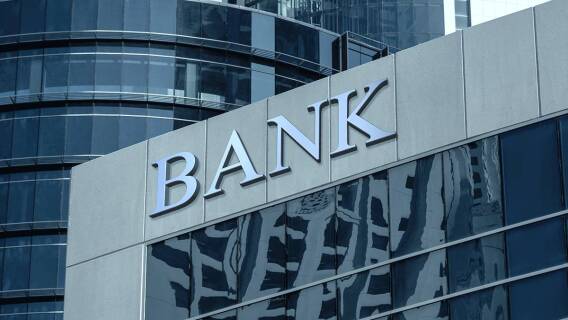Shares of U.S. Bancorp (USB) have slid 25% from their high set earlier this year and trade unchanged since 2015. Are the shares of this undervalued bank stock worth a closer look? For value investors? Certainly.
U.S. Bancorp is one of the largest and highest-quality banks in the country. At $590 billion in assets, it ranks fifth in the industry, behind the four top-tier banks including JPMorgan, Wells Fargo, Bank of America and Citigroup.
Why is U.S. Bank Stock Undervalued?
What makes U.S. Bank such a high-quality value stock? First, its operations are diversified, consistently profitable and low risk in nature. Its revenues are generated within its core competency of banking (reducing the risks from over-extension) but diversified across four product types. About 40% of revenues come from traditional consumer and small business banking activities, backed by its nearly national footprint of over 2,200 local branches. Payment services, including credit cards and corporate payment services, are a steady source of about 28% of its revenues. The bank serves larger businesses with a variety of banking services, including commercial real estate lending, bringing in another 28% of revenues. And, its stable wealth management, custody and investment management services segment comprises 15% of revenues. U.S. Bank has little of the highly volatile securities trading and investment banking revenues that its larger competitors earn, which helps reduce its profit volatility while also keeping the risk of a major blow-up to almost nil. In terms of profitability, USB generated a strong 15% return on equity and 1.16% return on assets in the most recent quarter – consistent with its history of high profitability.
[text_ad]
Second, this undervalued bank invests heavily in new technologies, including digital and back-office, to stay current with society’s ongoing demand for easier and faster banking at lower costs. U.S. Bank’s digital marketing tools are top-ranked by Kiplinger, its mobile banking app is rated #1 in the industry and is also rated #1 for mobile check deposits. Its commercial banking and back-office technology are widely considered top-tier, as well.
The bank has impressively low credit losses. Delinquent loans are only 0.35% of total loans – among the best in the industry. Another metric, relevant in that it points to the bank’s long history of quality, is that U.S. Bank skated through the global financial crisis over a decade ago with minimal losses.
Another hallmark of quality is the bank’s low expenses, with an expense ratio of only 59% in the most recent quarter. This is impressive, especially given the bank’s spending on maintaining its technology edge.
U.S. Bank has consistently had strong leadership and a capable board of directors. It is also a leader in hiring a diverse workforce – increasingly important in today’s society – and is regularly recognized as being among the world’s most ethical companies.
Despite its exceptional quality, shares of U.S. Bank remain out of favor. Investors worry about a recession (statistically we are already in one), which would raise its credit losses while also weighing on revenues. A company-specific concern is its recent $8 billion acquisition of Union Bank, a $105 billion (assets) bank with branches in California, Oregon and Washington that was previously owned by a Japanese bank. The concern is that the integration is being delayed – raising worries of a bungled integration – as well as the effect on U.S. Bank’s capital which has forced it to pause share buybacks until 2024.
Also, many view the bank’s CET1 capital ratio of 9.7% as too low. This now-standard metric of capital strength is below its peers, which generally average around 11%.
Yet, concerns about this value stock appear overdone. U.S. Bank’s impressive operations provide considerable defensiveness in a recession and the bank will clearly emerge from any recession in a healthy position. The bank has a history of successful integrations and the Union Bank integration should be no exception. And, this deal provides it with a valuable franchise, at a fair price, with a total cost that is nearly fully recovered by expense savings.
While statistically low, the bank’s capital ratio is more than adequate to support a low-risk and high-profit business that doesn’t require the higher capital ratios of its peers. And, the bank has excessive reserves against loan losses – this acts as an additional but hidden source of capital.
Investors can buy shares in this undervalued bank stock at a discounted valuation. The shares trade at only 9.7x expected earnings for 2023 – too low for this franchise. For investors who look at price/tangible book value, the shares trade at a 2.4x multiple, a valuation that may appear elevated but greatly understates the value of U.S. Bank’s services businesses which have little in the way of tangible book value. Further, this undervalued bank stock offers an attractive 4% dividend yield.
Compared to 2015, when the shares also traded at around 49, U.S. Bank earned only $3.16/share and paid only a $1.01/share dividend. In 2023, earnings will likely be about 60% higher and the dividend will be at least 80% higher.
Long-term value investors will find that the shares are definitely worth a closer look.
At the Cabot Undervalued Stocks Advisoryand theCabot Turnaround Letter, we help investors navigate the equity markets using a commonsense, value-oriented approach that emphasizes out-of-favor stocks of companies with real value. Let us help you sort through the market to find them.
[author_ad]

